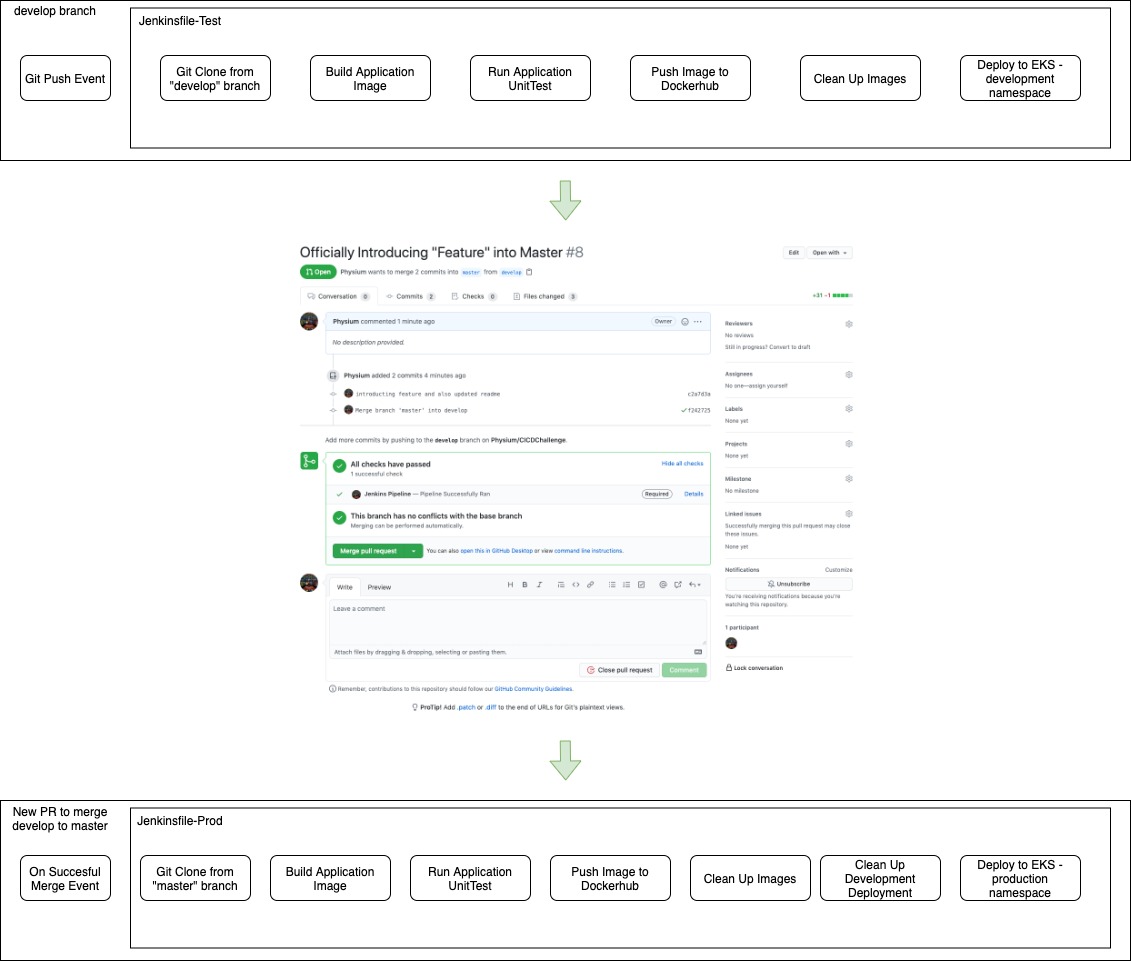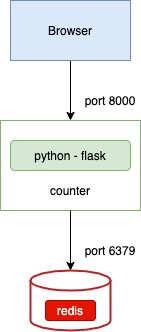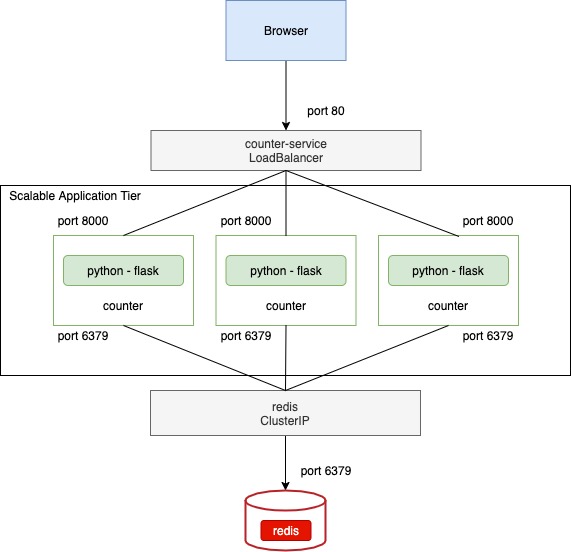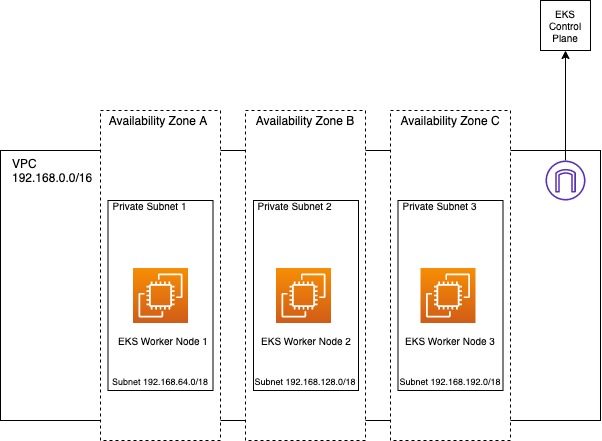To showcase a CI/CD application pipeline deployment.
Application in this project is a flask-based application utilizing redis cache to store the number of user's visits.
Reference: https://morioh.com/p/1e80d49f8d3e
The choice of tool used here to manage and create pipelines is Jenkins
The idea is to showcase a scenario of a developer developing a new feature in the development branch and subsequently merging it into the master branch.
There are 2 Jenkins Pipelines within this repository:
- Development
- Production
The development pipeline is essentially the main pipeline that the developers will interact with. Upon successful code push into the code repository, the pipeline will be triggered automatically to carry out a sequence of task involving building of container images, unit testing and follow up with a mock deployments into the test environment for usability testing. This pipeline heavily emphasis on the CI to ensure that whatever code push into the repository works as intended.
The production pipieline is similar to the development pipeline. However, this pipeline will only be triggered upon successful merge of a pull request from the develop to the master branch. This pipeline will do a build of the master branch and proceed to deploy to the production environment. The master branch is protected and can only be merged upon successful status checks from the development pipeline.
This is a high level diagram of the pipelines as mentioned above showcasing the different task it carries out within the pipeline and also the interaction between the 2 different pipelines and it trigger points.

Applications are deployed on Amazon EKS.
The following environment is reference off Amazon EKS getting started guide as the bare minimum requirement to bootstrap an EKS. For this demo purposes, I decided to go with "only public subnets" for simplicity sake.
Disclaimer: I not design on my own AWS environment. Environment is heavily reference from the following:
- https://aws.amazon.com/blogs/containers/de-mystifying-cluster-networking-for-amazon-eks-worker-nodes/
- https://docs.aws.amazon.com/eks/latest/userguide/getting-started-console.html#eks-create-cluster
- https://logz.io/blog/amazon-eks-cluster/
- Use Jenkins X for better integration with Kubernetes
- Integration with SonarCube/CodeClimate for code scanning
- Integration with build platforms (In this case, Helm?)
- Integration with messaging platform
- Infrastructure as a Code within the pipelines


